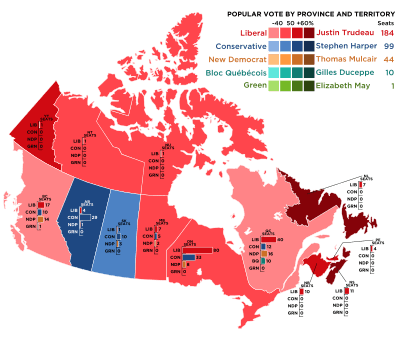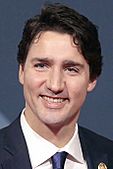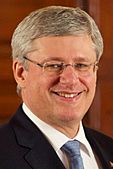2015 Canadian federal election facts for kids
|
|||||||||||||||||||||||||||||||||||||||||||||||||||||||||||||||||||||||||||||||||||||||||
|
|
|||||||||||||||||||||||||||||||||||||||||||||||||||||||||||||||||||||||||||||||||||||||||
|
All 338 seats in the House of Commons 170 seats needed for a majority |
|||||||||||||||||||||||||||||||||||||||||||||||||||||||||||||||||||||||||||||||||||||||||
|---|---|---|---|---|---|---|---|---|---|---|---|---|---|---|---|---|---|---|---|---|---|---|---|---|---|---|---|---|---|---|---|---|---|---|---|---|---|---|---|---|---|---|---|---|---|---|---|---|---|---|---|---|---|---|---|---|---|---|---|---|---|---|---|---|---|---|---|---|---|---|---|---|---|---|---|---|---|---|---|---|---|---|---|---|---|---|---|---|---|
| Opinion polls | |||||||||||||||||||||||||||||||||||||||||||||||||||||||||||||||||||||||||||||||||||||||||
| Turnout | 68.3% ( |
||||||||||||||||||||||||||||||||||||||||||||||||||||||||||||||||||||||||||||||||||||||||
|
|||||||||||||||||||||||||||||||||||||||||||||||||||||||||||||||||||||||||||||||||||||||||

Popular vote by province, with graphs indicating the number of seats won within that province. (Because seats are awarded by the popular vote in each riding, the provincial popular vote does not necessarily translate to more seats.)
|
|||||||||||||||||||||||||||||||||||||||||||||||||||||||||||||||||||||||||||||||||||||||||
|
|||||||||||||||||||||||||||||||||||||||||||||||||||||||||||||||||||||||||||||||||||||||||
The 2015 Canadian federal election was a big election held in Canada on October 19, 2015. During this election, Canadians voted for people to represent them in the House of Commons. This is where laws are made for the whole country. The election also decided who would become the next Prime Minister.
The official start of the election was on August 4, 2015, announced by the Governor General, David Johnston. This election was one of the longest in Canada's history.
The Liberal Party, led by Justin Trudeau, won the election. They won enough seats to form a majority government. This meant they had more than half of the seats in the House of Commons. Justin Trudeau became the new Prime Minister of Canada on November 4, 2015.
Election Results Explained
In an election, people vote for a candidate in their local area, called a riding. The candidate who gets the most votes in that riding wins a "seat" in the House of Commons. The party that wins the most seats usually forms the government.
Here's how the main parties did in the 2015 election:
| ↓ | |||||||||
| 184 | 99 | 44 | 10 | 1 | |||||
| Liberal | Conservative | New Democratic | B Q |
G | |||||
- Liberal Party: They won 184 seats. This was a big jump from the 36 seats they had before. They also got 39.5% of all the votes across Canada.
- Conservative Party: Led by Stephen Harper, they won 99 seats. They had 31.9% of the votes.
- New Democratic Party (NDP): Led by Thomas Mulcair, they won 44 seats and 19.7% of the votes.
- Bloc Québécois (BQ): This party focuses on Quebec. Led by Gilles Duceppe, they won 10 seats and 4.7% of the votes.
- Green Party: Led by Elizabeth May, they won 1 seat and 3.4% of the votes.
The total number of seats in the House of Commons was 338. To form a majority government, a party needed to win at least 170 seats. The Liberal Party won 184 seats, which was more than enough.
Images for kids
See also
 In Spanish: Elecciones federales de Canadá de 2015 para niños
In Spanish: Elecciones federales de Canadá de 2015 para niños







